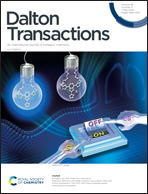Enhanced conductivity and structure stability of BiPO4@void@C/CNT particles for high-performance bismuth-based batteries†
Abstract
Bismuth is a promising candidate for next generation lithium-ion battery anodes; however, the unstable structure of Bi during delithiation and lithiation processes leads to poor cycling performance. Here, a BiPO4@void@C/CNT composite is prepared using a template by corrosion and calcination methods. The composite has a uniform structure, where BiPO4 is converted into Bi nanoparticles embedded within the Li3PO4 matrix by the first discharge process inside the C/CNT hollow structures. The Li3PO4 matrix can not only serve as a buffer layer to maintain the structural integrity during insertion/extraction processes, but also provides an electrolyte-blocking layer that limits the formation of the SEI layer on the surfaces of most of the Bi nanoparticles. Moreover, the CNTs on the surface of BiPO4@void@C offer an interconnected electron transportation pathway and also effectively prevent aggregation and separation of the active materials. In addition, the hollow porous structure provides sufficient free voids for expansion of the Bi/Li3PO4 matrix nanorods. As an anode for LIBs, BiPO4@void@C/CNT after rating performance testing delivers a high capacity of ∼347.0 mA h g−1 at a high current density of 1000 mA g−1 that is maintained for 530 cycles without capacity loss.



 Please wait while we load your content...
Please wait while we load your content...